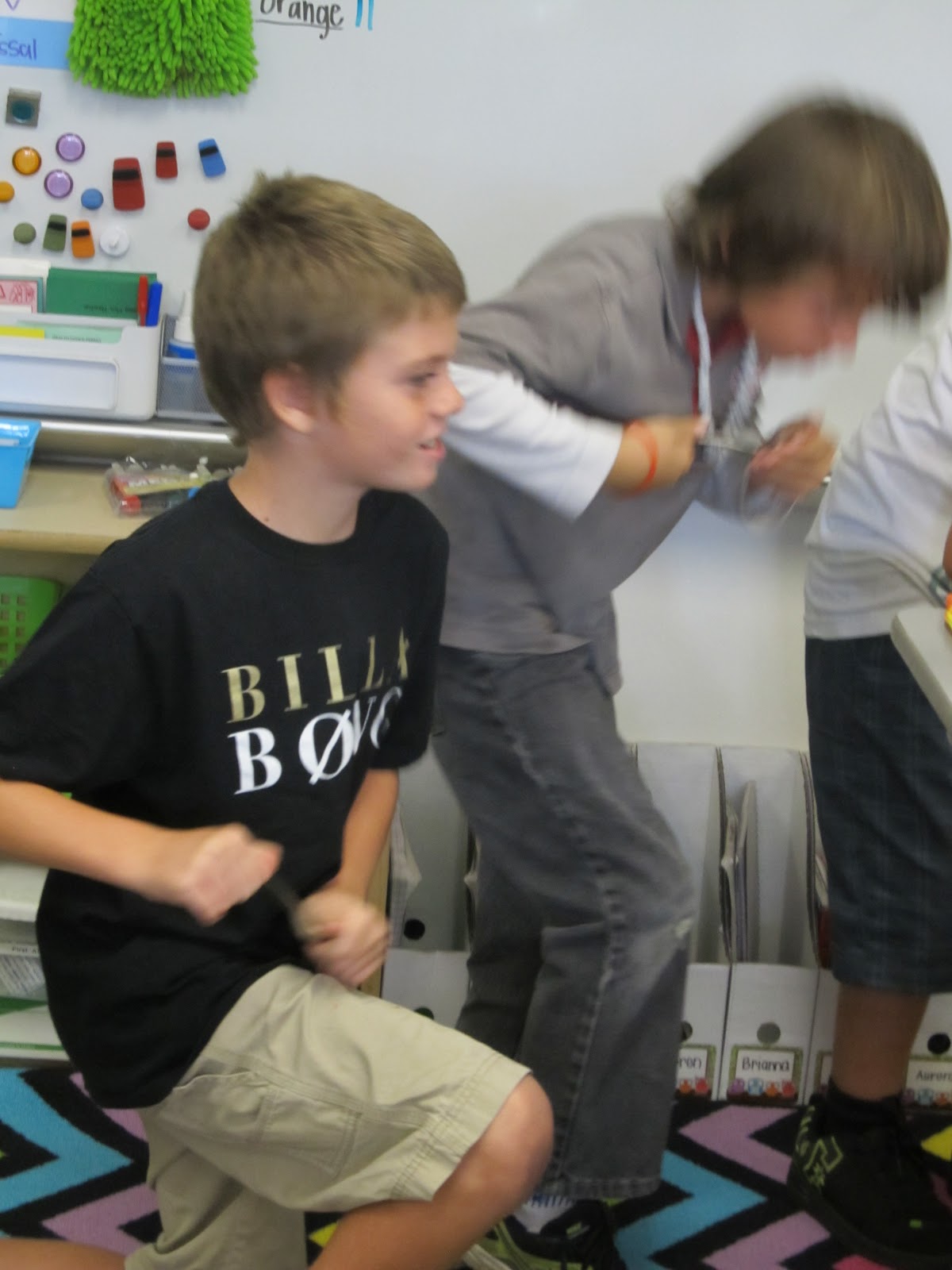When the students arrive in the room I have my science lab set up in the front of the room. A black, plastic cauldron is "smoking" in the front of the room and they are hooked. I ask them to predict what is making the cauldron smoke. I get all sorts of responses... a candle, a fog machine, dry ice...
From there, I show them the small glass bowl in the cauldron with water and dry ice in it. I hand out a fact sheet about dry ice and we learn all about dry ice, its properties and how it changes from one state to another. We learn about sublimation (how it "melts" from a solid to a gas) and how it's made.
Next, we move into dry ice experiments and demonstrations. I have kids come up and warm up metal spoons as much as they can. As a class we talk about friction and rub our hands together to create heat. Once our spoons are warmed up, we place a small piece of dry ice in the spoon to create Singing Spoons.
Since I teach third grade, many of the activities I do are demonstrations, but I try to have the kids participate and experience as much of the fun as possible. My next demonstration is showing how the gas being released can create bubbles. I show this in several ways. The first is with a beaker full of warm water, dry ice and bubble solution. The bubbles erupt from the beaker. Kids love to come up and get a handful of the bubbles to hold and watch the gas escape when they pop.
The second way that I show how the gas is released is by making BOO BUBBLES. I use a special container from Steve Spangler Science. I blow bubbles using the gas and bubble solution. If the students wear gloves or put the bubble on fabric (like their shirts) they won't pop. The oils from our skin are not a happy environment for the bubble, so putting them into students' hands won't work. The kids love getting their own personal BOO BUBBLE to examine.
Another favorite demonstration is when I make a crystal ball using a large, smooth-rimmed bowl, warm water, dry ice and a towel soaked in bubble solution. By creating a bubble across the top of the bowl, the gas releases and fills it pushing it up to look like a crystal ball. It is very dramatic and fun! Unfortunately, we didn't get a picture of this year's crystal ball.
Lastly, we made Atomic Slime and talked about how molecules look in a liquid or gas state and how they link together when it becomes a solid. We mixed an atomic slime mixture with cross linker solution and shook. The liquid turned into a semi-solid solution. The kids got to see how it glowed due to phosphoresence with a black light. They got to take a sample of the slime home with them.
The day was a blast. The kids learned a lot of science and had a great time. I did, too!
















No comments:
Post a Comment